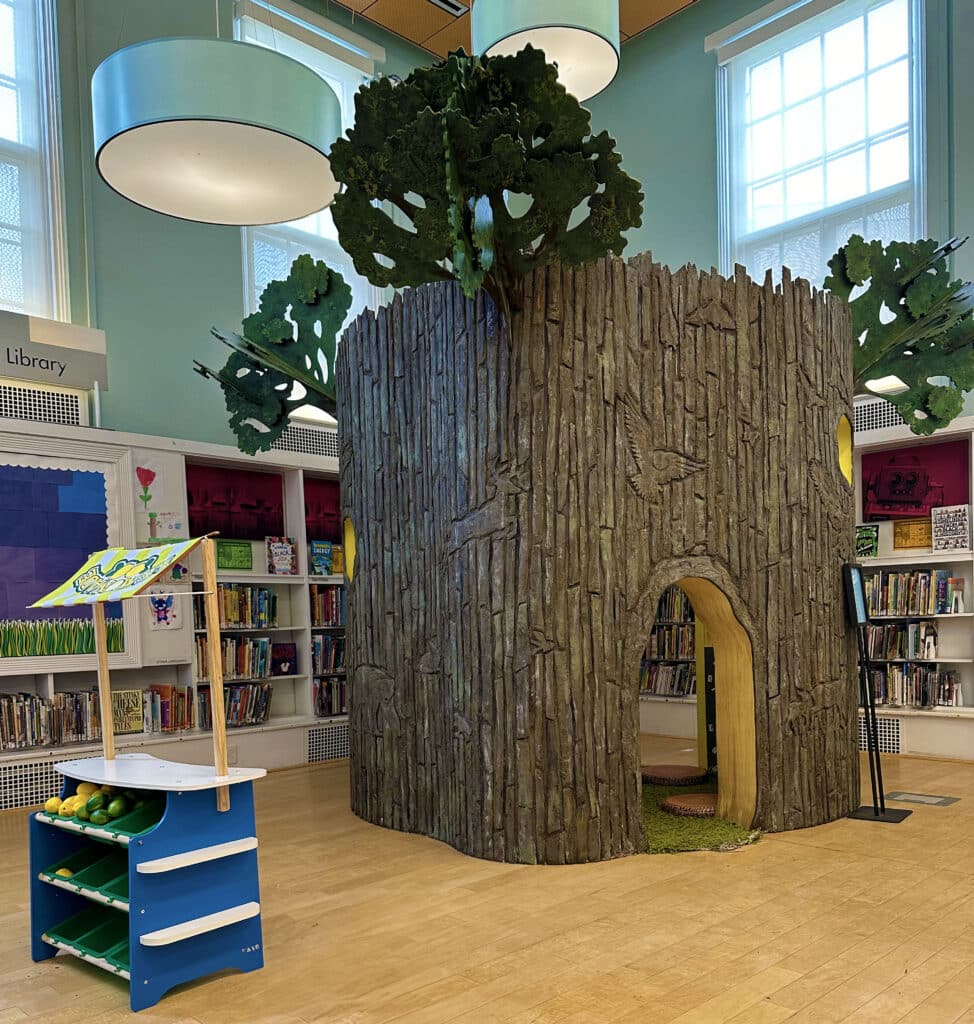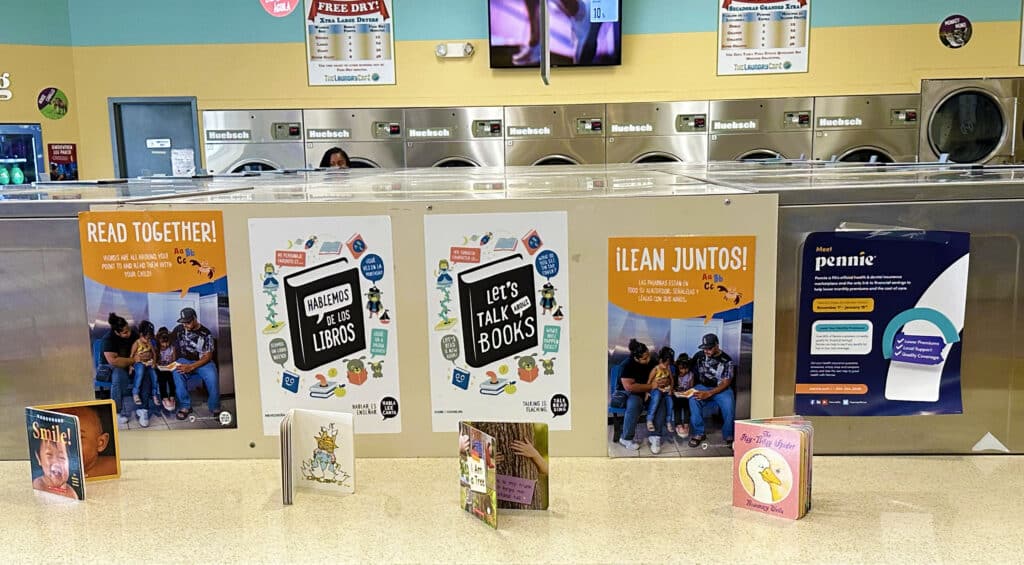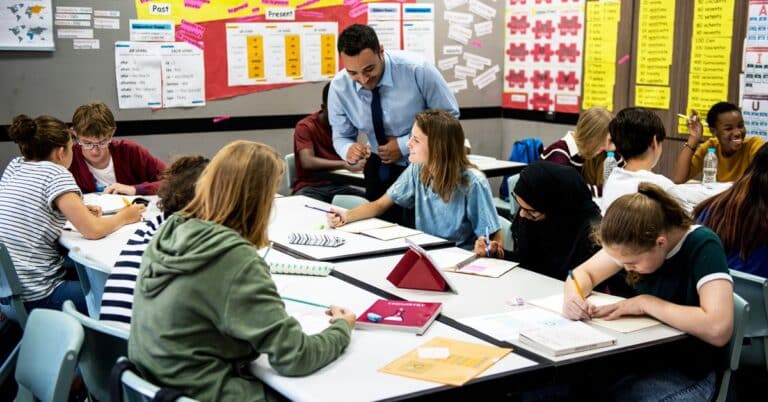Before attending Creating Playful Learning Cities: A Philadelphia Study Tour, I was unfamiliar with the concept of playful learning and unsure what to expect. I discovered that similar to personalized, competency-based learning, playful learning can also help learners feel a sense of ownership over their education and actively participate in their learning.
NAEYC defines playful learning as a learning context in which learners engage with content through various forms of play. The approach of playful learning hinges on an innate desire to participate in an activity that provides enjoyment. Playful learning encourages a learning style that continues to foster creativity, exploration and a joy for learning that extends beyond early childhood development.
Similar to playful learning, personalized, competency-based learning aims to approach education in a way that is tailored to the strengths of each learner. The connection between playful learning and personalized, competency-based learning lies in their shared emphasis on fostering a sense of ownership and active participation among learners. Both approaches empower learners to take charge of their learning journeys, making education a more engaging and meaningful process.
There are essential conditions explored in our navigation tool for helping districts scale personalized, competency-based learning that are paralleled in playful learning environments. As I toured different environments, I observed them in action.

How a shared vision reimagined a library
Having a shared vision provides a sense of direction and commitment toward a common purpose. For playful learning spaces to come to life, it starts with a shared vision for what the space will be and what it will provide for learners and their families.
A library is already a place where learning happens, but the Logan Library in Philadelphia built upon what was already there to create an immersive experience for early learners. After a community outreach initiative at Drexel University, the Logan Library Tree aimed to introduce nature into the city and the minds of children through playful learning. Carved into the twisting trunk of the tree are carvings of over 30 animals waiting to be discovered. The interior of the tree features a bright bookshelf and a cozy reading area. There are also a variety of magnets: magnetic letters for spelling, magnetic words to practice sentence structure and animal magnets. There are even window cut outs where children have been known to initiate imaginative play such as “fast food drive through.”

Culture embodies the community.
A culture built on relationships and sustained by expectations of innovation, inclusivity, celebrating growth and continuous improvement is necessary for personalized, competency-based learning to succeed. The same can be said for creating playful learning spaces. At each of the three site visits, it was clear to see that the culture of the community impacted how the playful learning space was designed. Puentes de Salud, a non-profit organization that promotes the health and well-being of South Philadelphia’s Latino immigrant community through medical services, innovative education programs and community development, is an embodiment of the culture of their community.
When walking into Puentes, the guest is immediately drawn into the vibrant murals – created by a collaboration of local artists and community members who served as models as well as contributors – that wrap around the walls of the medical center. What would have otherwise been a mundane and unengaging space has been transformed into a colorful learning environment.
Scattered on the tables around the room lay “I spy” tiles written in both English and Spanish. Each title instructs the reader to find a particular image on the mural. After the image is found, the reader can continue to the follow-up question that encourages conversation. Painted seamless into the mural, there are cubbies with cultural artifacts and text to describe their significance to the Latino community.

Flexible learning environments = anytime, anywhere learning
Playful learning can happen anywhere: from a bus stop, grocery store or a laundromat. Flexible learning environments encourage agency of how, where and when learning happens. When you think of a laundromat, you may not think of a learning environment, but through playful learning a laundromat can become a fun place for children to read, practice counting and learn about animals. It can even be a safe space for teens and college students to work on homework and have access to free Wi-Fi.
The Laundry Café does exactly that. The owner, Brian Hollan, of the Philadelphia area laundry chain Laundry Café, along with his partners, saw a need within his community for laundromats to offer more than standard services. They incorporate playful learning by having a dedicated play area for children that includes hard cover books, building blocks, a white board, magnetic letters and numbered hopscotch (number of corners of the shape match the number on the tile). Throughout the laundromat there are even more books and signs with animals and names in both English and Spanish.
Partnerships are essential for personalized learning spaces and playful learning spaces.
Partnerships are what make playful learning and personalized, competency-based learning possible, fostering inclusive and diverse opportunities for learners to pursue their educational goals and demonstrate their learning. Puentes de Salud, the Laundry Café and the Logan Library are all examples of how partnerships made playful learning environments possible. Creating playful learning spaces doesn’t always require a large budget, but it does require the collaboration and commitment of the community and partners working together to make it happen.
This resource was written by former Associate of Marketing and Communications Kayla Johnson.



